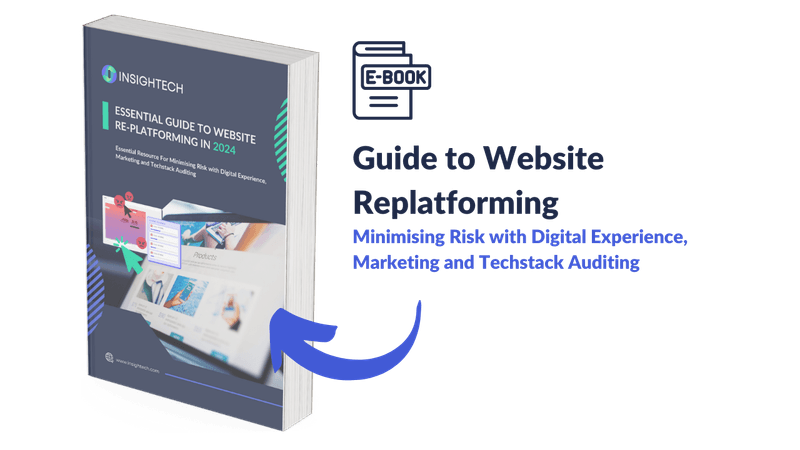What is Website Re-platforming?

For businesses, keeping pace often means making significant changes to their digital assets, including their websites. This is where the concept of website re-platforming comes into play. But what exactly is website re-platforming, and why is it important for businesses today?
Understanding Website Re-platforming
Website re-platforming is the process of moving a website from one platform or content management system (CMS) to another. This change is not just about redesigning the website’s appearance; it’s about enhancing its functionality, performance, and scalability to meet the evolving demands of the digital world.
The Need for Re-platforming
Several factors drive the need for re-platforming:
- Legacy Systems: Older systems may become cumbersome, expensive to maintain, and unable to support new features or integrations.
- Performance and Scalability: As businesses grow, their websites must be able to handle increased traffic and provide a seamless user experience.
- Integration Capabilities: Modern businesses require their websites to integrate smoothly with various third-party services and internal systems.
- Cost-Effectiveness: Over time, maintaining an outdated platform can become more costly than migrating to a more efficient, cloud-based solution.
Re-platforming vs. Other Modernisation Strategies
Re-platforming is often confused with similar concepts like rehosting or refactoring. However, it’s distinct in its approach:
- Rehosting involves moving the website to a new infrastructure with minimal changes.
- Refactoring means optimising and restructuring the code during the migration process.
- Re-platforming strikes a balance by transferring the core functionality to a new platform with some degree of reshaping, but without a complete overhaul.
The Process of Re-platforming
The re-platforming process typically involves:
- Assessment: Identifying the goals and requirements for the new platform.
- Platform Selection: Choosing a platform that aligns with the business’s current and future needs.
- Migration: Transferring data, content, and functionality to the new platform.
- Testing: Ensuring the new platform functions correctly and meets performance benchmarks.
- Deployment: Launching the new platform and monitoring its performance.
Free eBook: Comprehensive guide to navigating the complex process of website re-platforming.

- Identifying Limitations of the Current Platform
- Aligning Re-platforming Goals with Business Strategy
- Conducting a Comprehensive UX, Marketing and Tech Audit
- Questions to consider when analysing your site’s digital experience
Challenges and Considerations
Re-platforming can be a complex process, involving challenges such as:
- Data Migration: Ensuring data is transferred accurately and securely.
- Downtime Management: Minimising the impact on website availability during the transition.
- User Training: Acclimating staff to the new system.
- Cost Management: Balancing the investment in new technology with expected returns.
The Benefits of Re-platforming
Despite the challenges, the benefits of re-platforming are significant:
- Improved Performance: Enhanced speed and user experience.
- Scalability: Ability to grow and adapt to increased demand.
- Enhanced Security: Modern platforms often offer improved security features.
- Better Integration: Seamless integration with modern tools and services.
- Cost Savings: Long-term reduction in maintenance and operational costs.
Conclusion
Website re-platforming is a crucial step for businesses looking to stay competitive in the digital landscape. By moving to a more modern, efficient, and scalable platform, companies can ensure their online presence meets the high standards of today’s tech-savvy consumers and is poised for future growth.